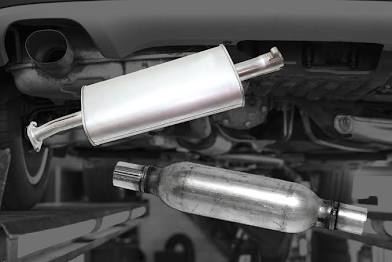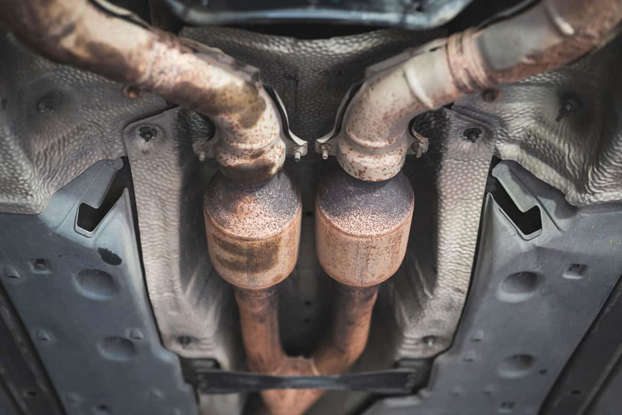Can I Drive with a Bad Oxygen Sensor?

Your vehicle’s oxygen sensor plays a vital role in the efficiency of your engine. It monitors the oxygen levels in the exhaust gases and helps the engine control module (ECM) adjust the air-fuel mixture for optimal combustion. When the oxygen sensor goes bad, it can lead to various engine performance issues. But the question is: Can I drive with a bad oxygen sensor?
In this article, we’ll explore the implications of driving with a faulty oxygen sensor, the risks involved, and what you should do if you suspect your oxygen sensor is failing.
What is an Oxygen Sensor?
An oxygen sensor (O2 sensor) is part of your vehicle’s exhaust system, and its job is to measure the amount of oxygen in the exhaust gases leaving the engine. The sensor sends this data to your car’s engine control module (ECM), which adjusts the fuel injection accordingly to ensure proper combustion. This allows your engine to run more efficiently, reduce emissions, and optimize fuel consumption.
Most vehicles have multiple oxygen sensors located in the exhaust system, with some before (upstream) and others after (downstream) the catalytic converter.
What Happens When an Oxygen Sensor Goes Bad?
A bad oxygen sensor can cause a range of issues with your engine’s performance, fuel efficiency, and emissions. Here’s what could happen:
1. Poor Fuel Efficiency
One of the primary functions of the oxygen sensor is to help regulate the air-fuel mixture. If the sensor fails, it could send incorrect data to the ECM, causing the engine to run either too rich (too much fuel) or too lean (too little fuel). This inefficiency will lead to higher fuel consumption.
2. Increased Emissions
A malfunctioning oxygen sensor can cause incomplete combustion, resulting in higher levels of harmful emissions. This could lead to your vehicle failing an emissions test, potentially resulting in fines or being unable to renew your registration.
3. Rough Idle and Engine Performance Issues
A bad O2 sensor can cause rough idling, hesitation, or stalling when driving. If the engine is receiving incorrect air-fuel mixture data, it may lead to misfires, a lack of acceleration, or erratic engine behavior.
4. Check Engine Light
If your oxygen sensor is faulty, the check engine light will likely turn on. The engine control module will detect that something is wrong with the sensor and log a diagnostic trouble code (DTC). This could indicate a specific issue with the oxygen sensor that needs attention.
5. Damage to the Catalytic Converter
A failing oxygen sensor can result in unburned fuel entering the catalytic converter, which can cause it to overheat and become damaged. This is a more expensive repair and can lead to costly replacement if not addressed in time.
Can You Drive with a Bad Oxygen Sensor?
While it is possible to drive with a bad oxygen sensor, it is not recommended. The O2 sensor plays a crucial role in regulating engine performance, fuel economy, and emissions. If you continue to drive with a faulty oxygen sensor, you risk a range of negative consequences, some of which could lead to more expensive repairs down the road.
Here’s a breakdown of the key considerations:
1. Short-Term Driving
If you’re driving with a bad oxygen sensor and experiencing only mild symptoms like decreased fuel efficiency or a rough idle, you may be able to continue driving for a short period. However, it’s important to recognize that driving with an inefficient air-fuel mixture could be damaging your engine over time.
2. Long-Term Driving
If you ignore the problem for too long, your engine could start to misfire, lose power, or stall. Additionally, unburned fuel in the exhaust system could damage the catalytic converter, which is a much more expensive repair than replacing an oxygen sensor.
3. Environmental Impact
A faulty oxygen sensor causes your vehicle to emit more pollutants into the atmosphere, negatively affecting the environment. If you continue driving without replacing the sensor, you’re contributing to air pollution.
4. Potential Breakdown
Driving with a faulty oxygen sensor can eventually lead to the car breaking down. If the oxygen sensor is part of a larger issue, such as a malfunctioning fuel system or exhaust problem, you may find yourself stranded unexpectedly.
What Should You Do if You Have a Bad Oxygen Sensor?
If you suspect that your oxygen sensor is failing or if the check engine light has come on, here’s what you should do:
1. Get a Diagnostic Check
The first step is to get a diagnostic check to confirm whether the oxygen sensor is indeed the problem. You can visit an auto parts store (like AutoZone or O’Reilly Auto Parts), where they will often perform a free diagnostic scan. If the scan identifies a faulty oxygen sensor, you can proceed with the repair.
2. Replace the Oxygen Sensor
If your oxygen sensor is bad, replacing it is usually the best solution. In some vehicles, this can be done as a DIY repair if you have the necessary tools and knowledge. However, if you’re unsure, it’s a good idea to take your car to a professional mechanic who can replace the sensor correctly.
3. Check the Catalytic Converter
If your oxygen sensor has been bad for an extended period, it’s a good idea to have the catalytic converter checked as well. A malfunctioning oxygen sensor can lead to unburned fuel entering the catalytic converter, which could cause damage. If the converter is damaged, it may need to be replaced, which is typically a much more expensive repair than simply replacing the O2 sensor.
4. Monitor Fuel Efficiency
After replacing the oxygen sensor, keep an eye on your fuel efficiency. If the problem persists, it could indicate an underlying issue with your vehicle’s fuel system, ignition system, or other components that need further investigation.
5. Get the Check Engine Light Reset
Once the faulty oxygen sensor is replaced, make sure to have the check engine light reset. A mechanic or auto parts store can clear the error code, so you can monitor if the issue has been resolved.
Conclusion
In conclusion, driving with a bad oxygen sensor is not ideal. While you may be able to drive for a short period, it could lead to a range of issues, including poor engine performance, decreased fuel efficiency, and potential damage to the catalytic converter. The oxygen sensor is crucial for your engine’s optimal performance, and ignoring the problem could result in more expensive repairs down the road.
If you suspect that your oxygen sensor is faulty, it’s best to get it diagnosed and replaced as soon as possible. This will help ensure your vehicle runs efficiently, reduces emissions, and avoids unnecessary breakdowns. Replacing an oxygen sensor is a relatively simple and affordable fix, and it’s a small investment in keeping your vehicle running smoothly.




